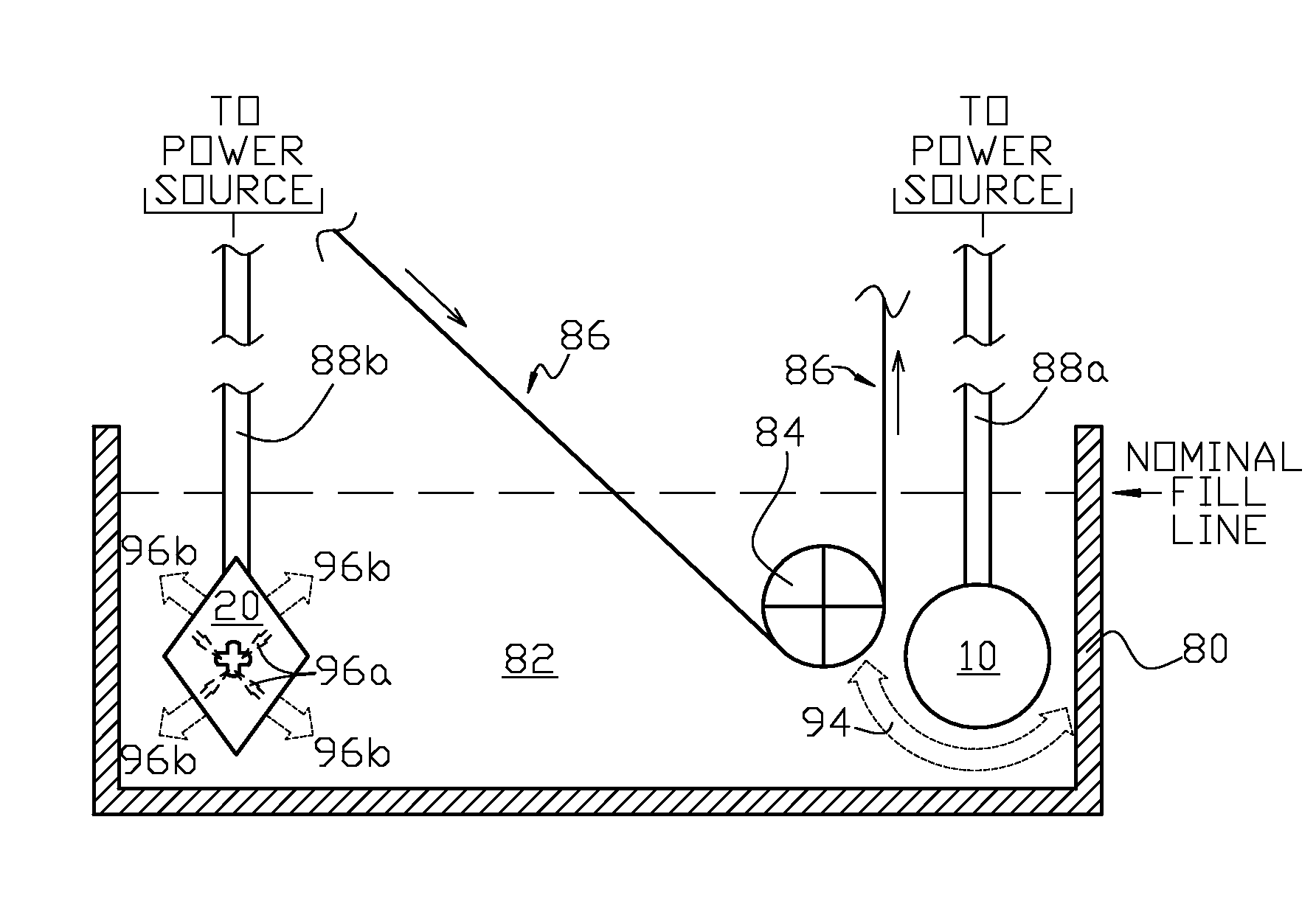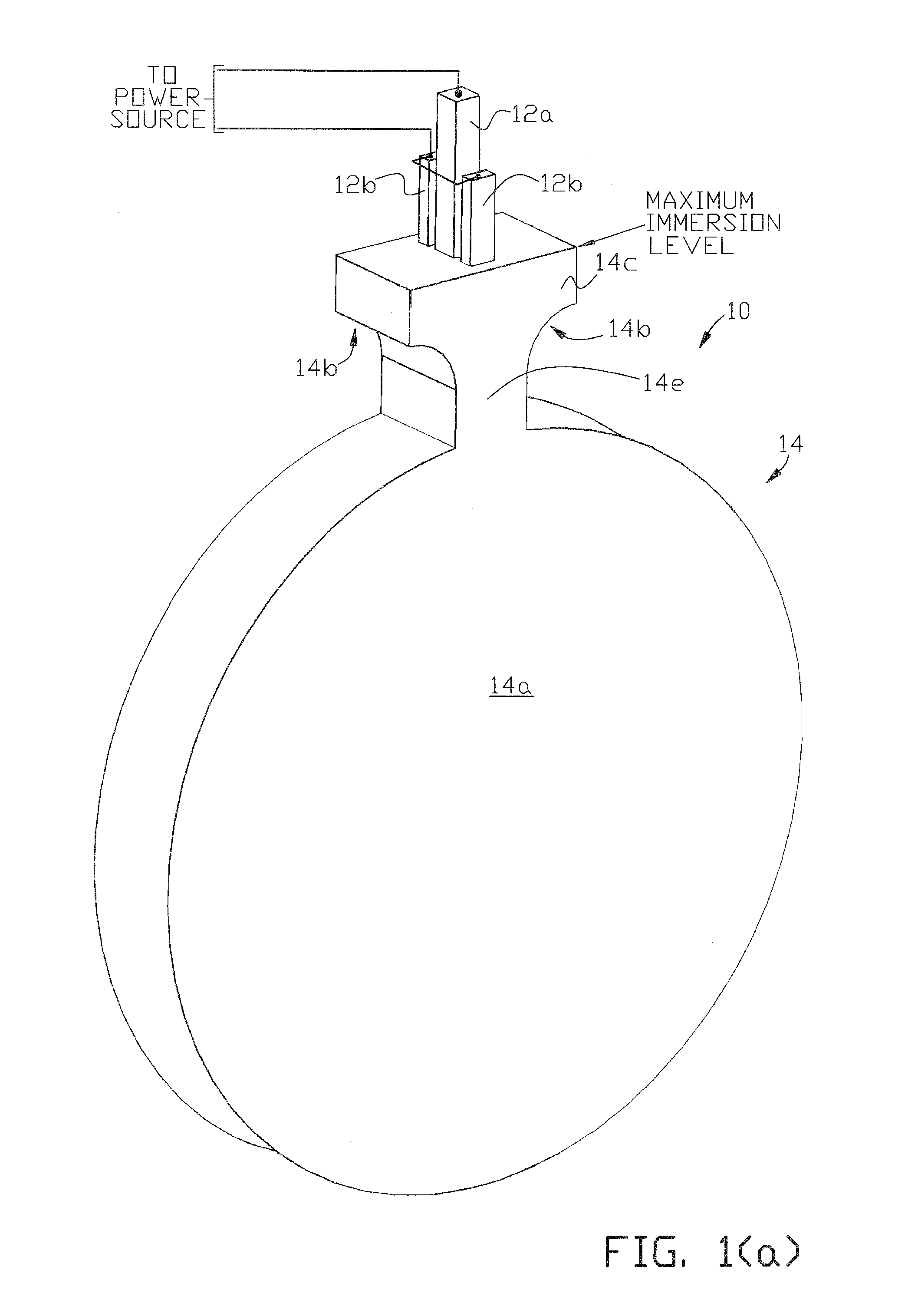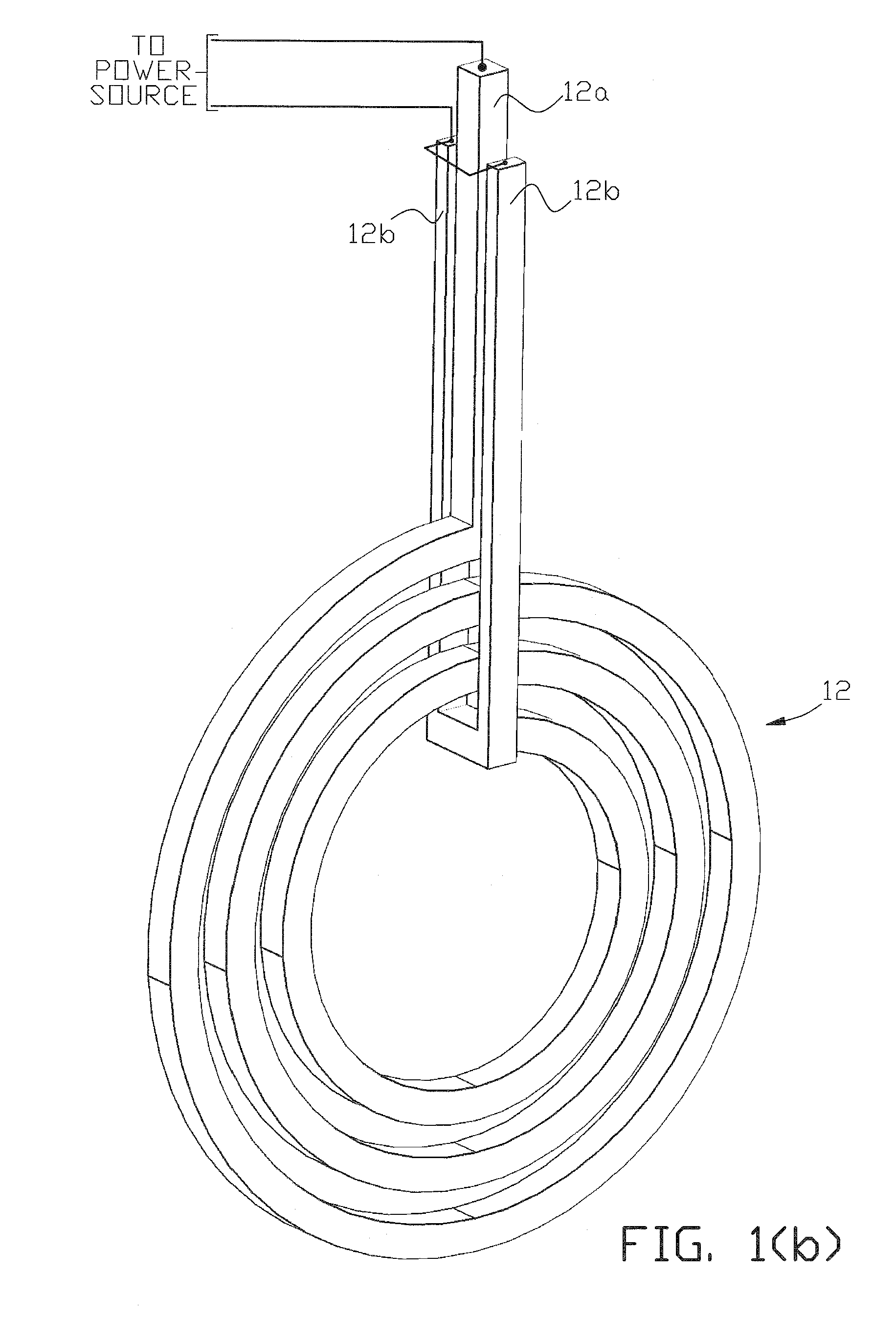Electric Induction Heating and Stirring of an Electrically Conductive Material in a Containment Vessel
a technology of electrically conductive materials and containment vessels, which is applied in the direction of inorganic chemistry, crystal growth process, alkali metal halide purification, etc., can solve the problems of local heating and molten metal movement in the pots, insufficient pot insulation alone, and insufficient design of the refractory of the pots
- Summary
- Abstract
- Description
- Claims
- Application Information
AI Technical Summary
Benefits of technology
Problems solved by technology
Method used
Image
Examples
Embodiment Construction
FIG. 1(a), FIG. 1(b), FIG. 1(c) and FIG. 1(d) illustrate one example of a submersible electric induction heating and stirring apparatus 10 of the present invention. In use, apparatus 10 is removably inserted in a container, such as a holding vessel, coating pot, or anode or cathode melter, holding molten metal or another electrically conductive material or composition. Induction coil 12 (FIG. 1(b)) is embedded within refractory 14 (FIG. 1(a)). Although the refractory is shown in the shape of a solid exterior disc in FIG. 1(a), any suitable configuration of refractory (that is, any abrasive and heat resistant media) may be used as long as it isolates the embedded coil from the surrounding molten metal. For example the refractory may be shaped in a rectangular or diamond. A suitable refractory or coating material can be selected based upon the type of molten metal in the vessel. For example, if the molten metal is silicon, at least the outer surface of the refractory may be of a nitra...
PUM
| Property | Measurement | Unit |
|---|---|---|
| Electrical conductivity | aaaaa | aaaaa |
| Power | aaaaa | aaaaa |
| Electrical resistance | aaaaa | aaaaa |
Abstract
Description
Claims
Application Information
 Login to View More
Login to View More - R&D
- Intellectual Property
- Life Sciences
- Materials
- Tech Scout
- Unparalleled Data Quality
- Higher Quality Content
- 60% Fewer Hallucinations
Browse by: Latest US Patents, China's latest patents, Technical Efficacy Thesaurus, Application Domain, Technology Topic, Popular Technical Reports.
© 2025 PatSnap. All rights reserved.Legal|Privacy policy|Modern Slavery Act Transparency Statement|Sitemap|About US| Contact US: help@patsnap.com



